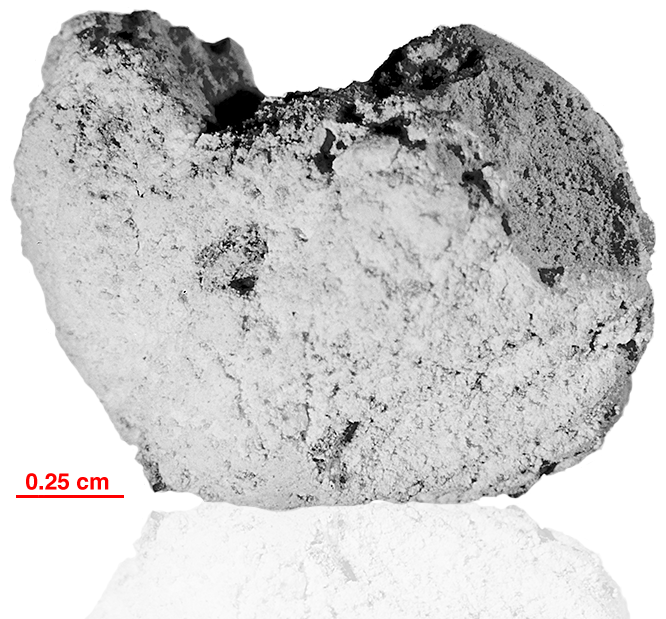
Fact sheet
67455 is a very friable, white polymict feldspathic breccia that was collected from the top of a large boulder on the rim of North Ray Crater. It is a highly-shocked, fragmental-matrix breccia and contains clasts of various cataclastic anorthosites. The groundmass of 67455 is made up of crushed and compacted plagioclase grains (rotation 2). Within the crushed matrix are numerous clasts of weakly shocked, cataclastic anorthosite with relic cumulate texture. Mineral chemistry indicate they are ferroan anorthosite. Metallic iron and sphalerite are present as accessory minerals.
The sample weighed 942 grams before analysis. Pristine anorthosite clasts in this fragmental breccia have been dated at 3.91±0.12 to 3.97±0.021 billion years (Ar/Ar).
Further details of this and other Apollo samples are here: http://curator.jsc.nasa.gov/lunar/
Our thin section is slightly thick in parts. Laser or SEM analysis lines criss-cross the sample.
The Apollo 16 landing site was in the hilly region around Descartes crater in the lunar highlands. The landing spot was chosen to allow the astronauts to gather geologically older lunar material (Descartes Formation and the Cayley Formation) than the samples obtained in the first four landings, which were in or near lunar maria.
The mission lasted 11.1 days, with a stay on the lunar surface of 71 hours. The crew were on the lunar surface for 20.2 hours during which they traversed approximately 27 kilometers and collected approximately 96 kilograms of samples.
Apollo 16 was launched on 16 April 1972.






